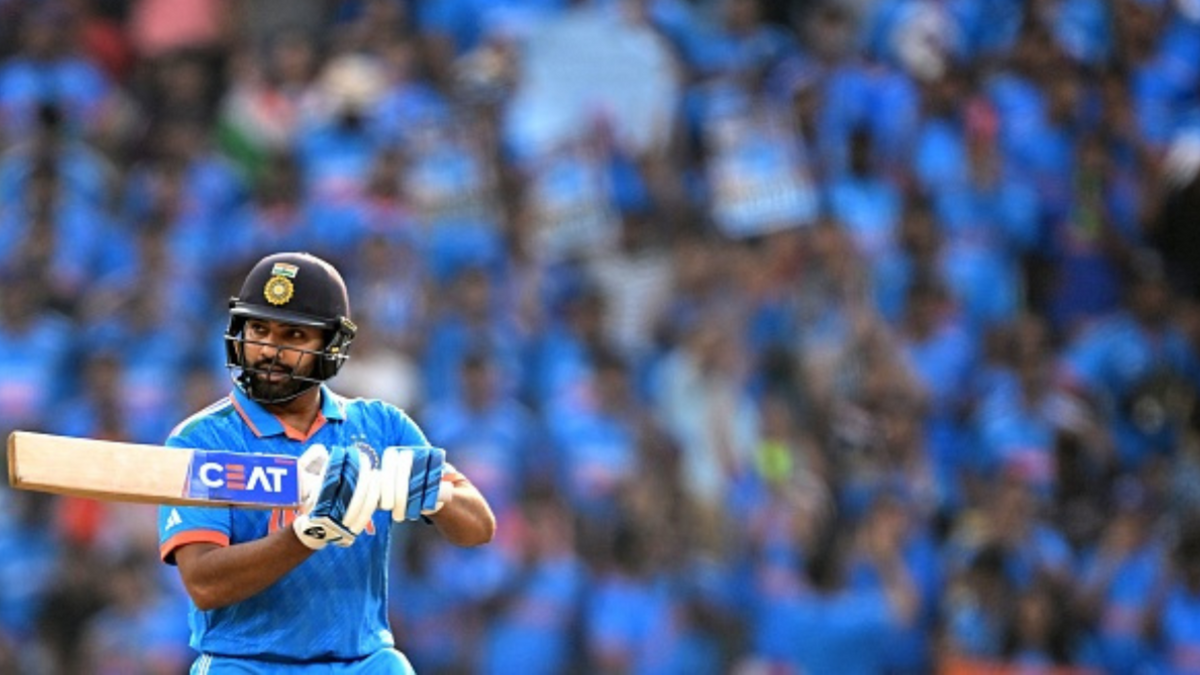
Sarah Waris was amongst the crowd at Ekana to witness arguably Rohit Sharma’s best ODI innings on a hot and sweltering day in Lucknow.
To bet on the World Cup with our Match Centre Partners bet365 head here.
You could sense the excitement around India’s first World Cup game in Lucknow. The stadium had become a famous selfie zone for excited supporters, who came from far and wide with their young children. Most could not procure tickets but clicking photographs with the blazing Ekana floodlights in the background a day before the game allowed them to be a part of history.
Uber and Ola drivers could not stop discussing the massive traffic diversions with fellow colleagues on the phone’s loudspeakers, disrupting any attempts at catching a nap on the long cab ride in the midst of a hectic World Cup schedule. The match day had everyone buzzing, with fans lining up at least three hours before the start of play.
It was not merely out of passion but also to escape the traffic that would make getting to the stadium, located on the busy Shaheed Path, a bypass on the outskirts of the city, challenging. With a number of restrictions in place for personal vehicles, supporters had to walk nearly three kilometres to reach their respective entry gates. Getting to their seats was another long trek, but the sight of the green outfield and the goosebumps-inducing national anthem made it all worth it.
Batting first for the first time in the tournament, Rohit played off a rare maiden but switched to the aggressive approach he has consciously adopted in the tournament, racing away to 17 in 11, leaving the fans ecstatic. 18 runs came off David Willey’s second over, and just when a big score was expected the conditions bared their true selves.
As the sun peaked out and shone a little too brightly on the city, the track became slower for the batters. It was soon all about survival as India lost three quick wickets, with Virat Kohli and Shreyas Iyer falling to expansive shots. The game plan needed to change, with Rohit now having to play cautiously against the slower bowlers in particular.
Around him, fans had to grapple with the changes themselves: With no cloud cover and no roof covering the stands on the lower blocks, the initial tinge of exhilaration gave way to the realisation that energy had to be conserved to last the entirety of the match in the heat. With food fast running out, you were left with soggy bhel and a glass of Thumbs Up diluted with water, costing INR 200, to see you through.
It took 71 balls for the first top-order failure in the World Cup for India. Hardik Pandya’s injury meant India just had five bowlers, which meant they had to put on a big score. It was here that Rohit brought forth his exceptional mental toughness, the same that was on display during the second Test in Chennai against England in 2021 and in Nagpur against Australia this year. They were knocks that cemented his place as an all-condition Test beast after his rocky start in the format, while his 101-ball 87 in Lucknow further added to his legacy in ODI cricket.
[breakout id=”0″][/breakout]
Rohit was not perturbed by the pacers, playing his classic pull against Willey or using his feet exceptionally against the dangerous-looking Chris Woakes as he danced down the track. He swivel-flicked a 146.4kmph delivery by Mark Wood on 49 and flicked a slightly short ball over the ropes soon off him moments after getting to his slowest 50 of the World Cup.
His biggest test was against the spinners, against whom he had excelled previously in the World Cup with a strike rate of 106 after the first four games. But this was not a track where he could go after them, so he relied on playing with swift hands instead. He played an inside-out shot, a late cut, a reverse sweep and then played the “shot of the tournament” against Liam Livingstone in the 29th over when he danced down and once again played a flick, his most productive shot of the evening, before it turned. A delivery earlier, the ball had spun massively away from the opener, who then tried to minimise the turn by stepping out.
There were times when Rohit was undone by sharp spin, and failed to get bat on the ball before he was rapped on the pads. He had a control percentage of 78, lower than Suryakumar Yadav, who played a knock of 49 that was reminiscent of Suresh Raina’s innings in the 2011 World Cup semifinal – impactful and under the radar- but he hung around, much like the crowd, in a tough environment, ensuring a magical end to a sultry day.
Rohit was out skying one to deep mid-wicket, which led to plenty of conversation, with many arguing the shot was unnecessary as he neared his eighth World Cup ton. The skipper himself admitted the team fell short of a par score and that his dismissal came at the wrong time, but the intention of the hit cannot be faulted.
As he walked back to thunderous applause you knew it was not an innings you came in for but one you would remember fondly as it made its way into the annals of World Cup classics. No other batter in the game faced more than 60 balls and no one else got a fifty, which further shows just how patient he was.
It was the kind of day that sapped you dry, leaving you dehydrated with a heat-inducing migraine that forced you to take Monday off to recover. All of that makes Rohit’s innings even more memorable, for he not only had to survive the demanding red soil track but also beat the scorching weather en route to a match-winning show.








